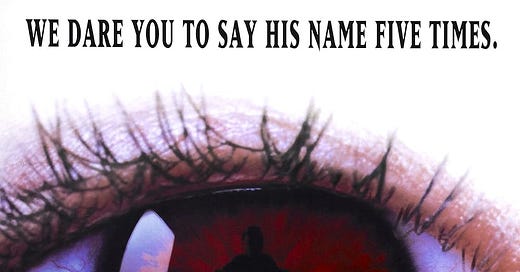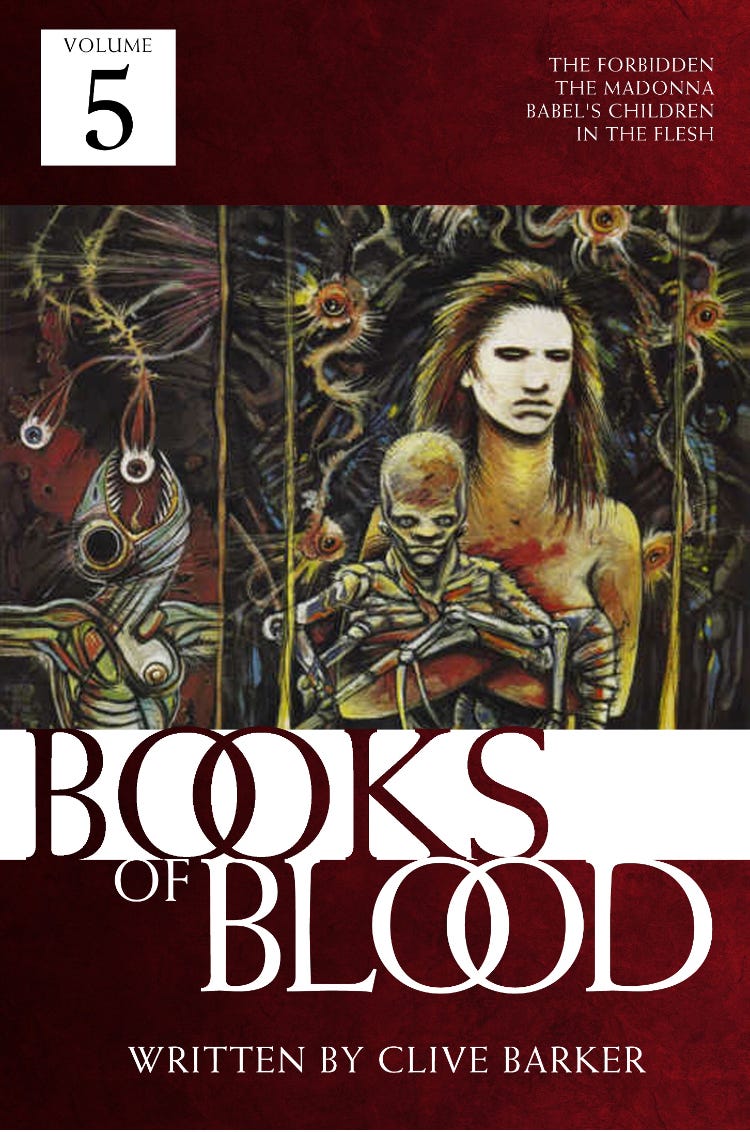Candyman: Reflecting on Tony Todd’s Iconic Role
Candyman, Candyman, Candyman, Candyman, Candyman
I’ve been on a major Clive Barker kick lately. I had the privilege of meeting him last month, and it inspired me to read and reread his various novels, novellas, and short stories ever since. All of this is to say that Barker has been at the front of my mind. Then the world received some terrible news over the weekend: legendary actor and horror icon Tony Todd had passed away at the age of 69. Todd was easily one of my favorite actors due in large part to his many great performances in genre films. He stars as the heroic lead in the remake of Night of the Living Dead (1990), he plays the intimidating right hand man of the primary antagonist in The Crow (1994), and he shines as the charismatic blind companion of the monster in Frankenstein (2015). But nothing will ever surpass his most iconic role as the titular Candyman in the 1992 horror classic adapted from the Clive Barker short story “The Forbidden.”
Before getting into the film, I wanted to go back and take a look at the Barker story. “The Forbidden” appeared in the fifth volume of Books of Blood that was published in 1985. Books of Blood was an anthology series that collected short stories written by Barker. There are a total of six volumes, and I highly recommend all of them.
This particular story follows an English university student named Helen who is doing her thesis on graffiti. She ventures into a low income neighborhood in Liverpool to photograph buildings covered in said graffiti. While there, she hears about an urban legend in the neighborhood: Candyman. He’s a Jack the Ripper type of figure who has a hook in place of one of his hands, and he’s credited with some violent murders in the neighborhood. Helen begins to incorporate this urban legend into her thesis, but she is very clearly a skeptic. As you might imagine, she eventually comes face to face with this supernatural figure. Here is how Barker describes him:
She looked, now, down at those hands. One of them was missing. In its place, a hook.
He was bright to the point of gaudiness: his flesh a waxy yellow, his thin lips pale blue, his wild eyes glittering as if their irises were set with rubies. His jacket was a patchwork, his trousers the same. He looked, she thought, almost ridiculous, with his blood-stained motley, and the hint of rouge on his jaundiced cheeks. But people were facile. They needed these shows and shams to keep their interest. Miracles; murders; demons driven out and stones rolled from tombs. The cheap glamour did not taint the sense beneath. It was only, in the natural history of the mind, the bright feathers that drew the species to mate with its secret self.
And later in the story:
In his struggle to escape from its folds, his jacket had come unbuttoned, and she saw— though her senses protested—that the contents of his torso had rotted away, and the hollow was now occupied by a nest of bees. They swarmed in the vault of his chest, and encrusted in a seething mass the remnants of flesh that hung there. He smiled at her plain repugnance.
Paints quite the picture.
Barker’s story focuses on themes of classism and the way those with privilege can force themselves into communities to their detriment. Helen cares little about the people she interacts with beyond a merely academic curiosity. She dismisses their stories out of hand and fails to grasp the gravity of the situation until it’s too late.
“The Forbidden” was adapted into the film Candyman in 1992. Written and directed by Bernard Rose, the film takes the basic plot and structure of Barker’s short story and transports it into Chicago. Themes of class and privilege are still there, but Rose introduces a racial component to his version. Helen (played by Virginia Madsen) is still a university student working on her thesis, but this time it is focused on urban legends from the start. She once again hears about the legend of Candyman in this adaptation, and it leads her to the public housing development of Cabrini-Green in Chicago. It’s a predominantly Black neighborhood that has been completely neglected by the political establishment of Chicago. There is a fear among the residents of an enigmatic figure called Candyman who has been blamed for a series of unsolved murders and gruesome attacks.
This version of Candyman differs from the one depicted by Barker. The key elements remain (a hook for a hand, a rotted away torso filled with bees, etc.), but additional elements are added. One addition is the nature by which he is summoned. This Candyman can be conjured by looking into a mirror and saying his name five times. It’s a bit of a riff on the classic “Bloody Mary” urban legend. This Candyman is also given a backstory. We are told that Candyman is the vengeful spirit of Daniel Robitaille. He was the son of a slave born in the late-nineteenth century who had fallen in love with a white woman. Her racist father assembled a lynch mob that cut off his hand and ultimately murdered him by smearing him with honey and covering him in angry bees that stung him to death. It’s a really horrific story.
Much like the short story, Helen’s investigation ends up casting doubt on the existence of Candyman within the community. That leads to Candyman making his presence known to Helen as a result. This happens almost forty-five minutes into the film, and I find it to be one of the most memorable and scariest scenes in horror movie history.
This scene also established Tony Toddy as a horror icon for all time. His deep voice is paradoxically both gravelly and silky smooth. There’s an ethereal quality with how he delivers his lines. There’s also a playfulness with how he says Helen’s name. The scene gives me chills every time I watch it. It should also be noted that Tony Todd stands at a towering height of 6’5”. This makes him all the more intimidating as he stands next to his diminutive victims.
The rest of the film revolves around Candyman toying with Helen and framing her for various murders and acts of violence in order to once again build up his legacy. Virginia Madsen is great, but this is Tony Todd’s movie. He delivers several haunting monologues throughout the film (including one at the very beginning of the film from offscreen), and his presence constantly lingers over every scene regardless of whether he’s physically present or not. There is an especially infamous scene later in the movie where he kisses Helen with a mouthful of bees.
The scene is infamous both for how horrifying it is along with the fact that real bees were used. If you’re wondering how the filmmakers were able to make it look like those bees were really in Tony Todd’s mouth, it’s because they really filled Tony Todd’s mouth with live bees. Todd famously negotiated a bonus in his contract where he would receive an additional $1,000 for every bee sting he received during the making of the film. That ended up earning him $23,000. He earned every cent.
Todd’s performance as Candyman elevated the character to the status as one of the most popular modern horror villains in history. He’s part of the same pantheon as Michael Myers, Jason Vorhees, Freddy Krueger, and Pinhead for many horror fans (myself included). The film was also a huge financial success with $25.8 million at the box office on a $9 million budget. That success would lead to two sequels in the ‘90s with Todd reprising his role as Candyman: Candyman 2: Farewell to the Flesh (1995) and Candyman 3: Day of the Dead (1999). Neither film achieved the same critical or financial success of the original (the third entry went direct to video), but they did solidify Candyman as a franchise with Todd being the face (and voice) of that franchise. Nia DaCosta would go on to direct her own Candyman film in 2021 (cowritten with Jordan Peele) that served as both a reboot and a sequel to the original (much like David Gordon Green’s Halloween in 2018). Though the film does not star Tony Todd, he does make a cameo appearance with his version of Candyman referenced on more than one occasion.
Candyman continues to endure as one of the most successful horror franchises to emerge from the ‘90s. More than anything else, that is due to Tony Todd’s star making performance. He will be dearly missed.





